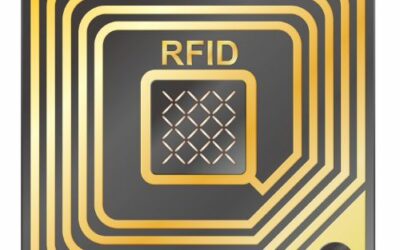Having trouble organising your IT assets? Read this post now to find out how using IT asset inventory software can help immensely!
Hardware Asset Management: What You Should Know
Hardware Asset Management: What You Should Know
Taking care of hardware assets can be easier than done. Such as these can be valuable and they can have a large impact on your day-to-day business. Therefore, taking care of them is a priority. As we have already seen, however, it can be tricky. This is simply because hardware assets can often be used in a multitude of different locations. Laptops, for example, can be used in the office, on the train, at home, or in the field. Consequently, managing them can seem difficult.
When you start using a reliable hardware asset register, however, day-to-day business can seem easier.
Creating An Asset Inventory Is Easy
Did you know that creating an asset register is easy? All that you have to do is affix a barcode, RFID tag, or QR code to each of your hardware assets. The good news is that tags and barcodes have usually been made to last. In other words, you won’t have to spend very much time attaching them to your assets. Neither will you have to spend much time worrying whether the tag or barcodes have stuck. They are built to last.
Once everything is affixed, and in place all you need to do is scan the code to create a digital profile. A profile such as this will ensure you can add and store a lot of information about the asset question.
You could, for example, add some or all of the following information:
- The assets make model and serial number
- When you purchase the asset
- The asset’s expected lifespan
- The maintenance schedule
- Photograph of the asset for easy identification
- Warranty and insurance details
- User instruction manual and/or link to the manual
- Which department the asset is usually located in (if any)
- Which members of your team usually use the asset
- And so much more
When you add a lot of information about each asset to your hardware asset register you make life easier. For example, should you need to make an insurance claim on the laptop you know where to find the insurance details. This could potentially save you a lot of time and effort.

Location Tracking Is Not Difficult
Some people make the mistake of assuming that you need a lot of technology to locate your assets. In truth, all that you need is a hardware asset register that is reliable and lets you track your assets.
As we have already seen, you need to affix a barcode or a QR code to your assets. As soon as you have done this and created an asset register, location tracking will start.
When you track the location of your assets, you can see where they are all day, every day. All you need to log into your asset register software. What you have, you can see where your assets are located. Tracking the location of your assets does not have to be a big deal, it can be quite a simple procedure that has many benefits.
Productivity Can Be Boosted
When you start using a hardware asset register in the workplace. It helps to boost productivity. This is because you know where your assets are, you may even know who is using them. You may also know if an asset is undergoing maintenance.
Furthermore, you can start using the software to help you tick all of those boxes. You could set up a product ordering system using your asset register software. The system could help you by automatically ordering assets when your stock count is low. As a result, this means you don’t have to spend as much time worrying about whether you have enough stock in your warehouse. Consequently, productivity can be boosted and you could find yourself spending more time on other issues.
Controlling Assets Can Be Easy
Controlling your assets can be so much easier than you imagined. When you start using a reliable and modern hardware asset register you will have more control. What this ultimately means is that you could see your business from a new perspective. Thanks to the data that your asset register will automatically start creating, you can learn more about your business. You could, for example, see your business from a whole new level. A result of this means that you could potentially make your business more successful. You could do all of this simply by controlling your business’s assets.
As you can see, using a hardware asset register comes with many benefits. You can do more than you think when you use the right asset register. You will have more control over each of your assets and you can see where they are every minute of every day. It’s this that can help to bring peace of mind.
Wish to speak with an expert about your hardware asset register and controlling your hardware assets? Contact us today at team@itemit.com.
The Ideal Hardware Asset Management Tool
Choose a better way to track your assets
Start your free 14-day trial now
Instant access. No credit card details required.
Related articles
IT Asset Management Made Simple
How To Get Started With RFID
How does RFID tracking work and how can you begin to get started with it? Read this article as it explains everything you need to know!
How Your Business Can Save Money By Using An Asset Register
How can you save your business by using an asset register app? Read this post now to uncover the secrets that could help your business thrive!





